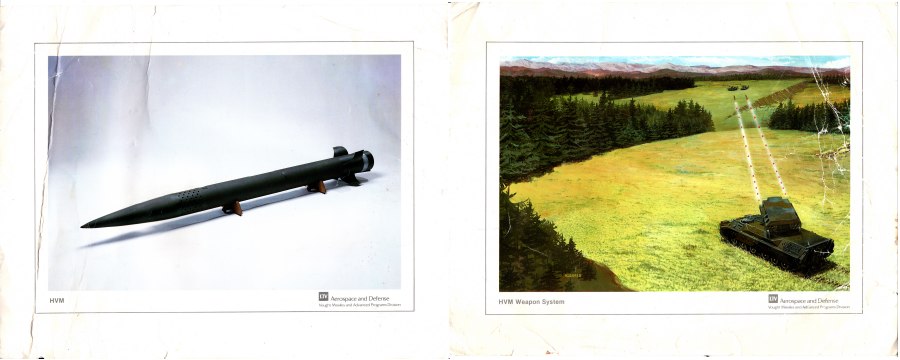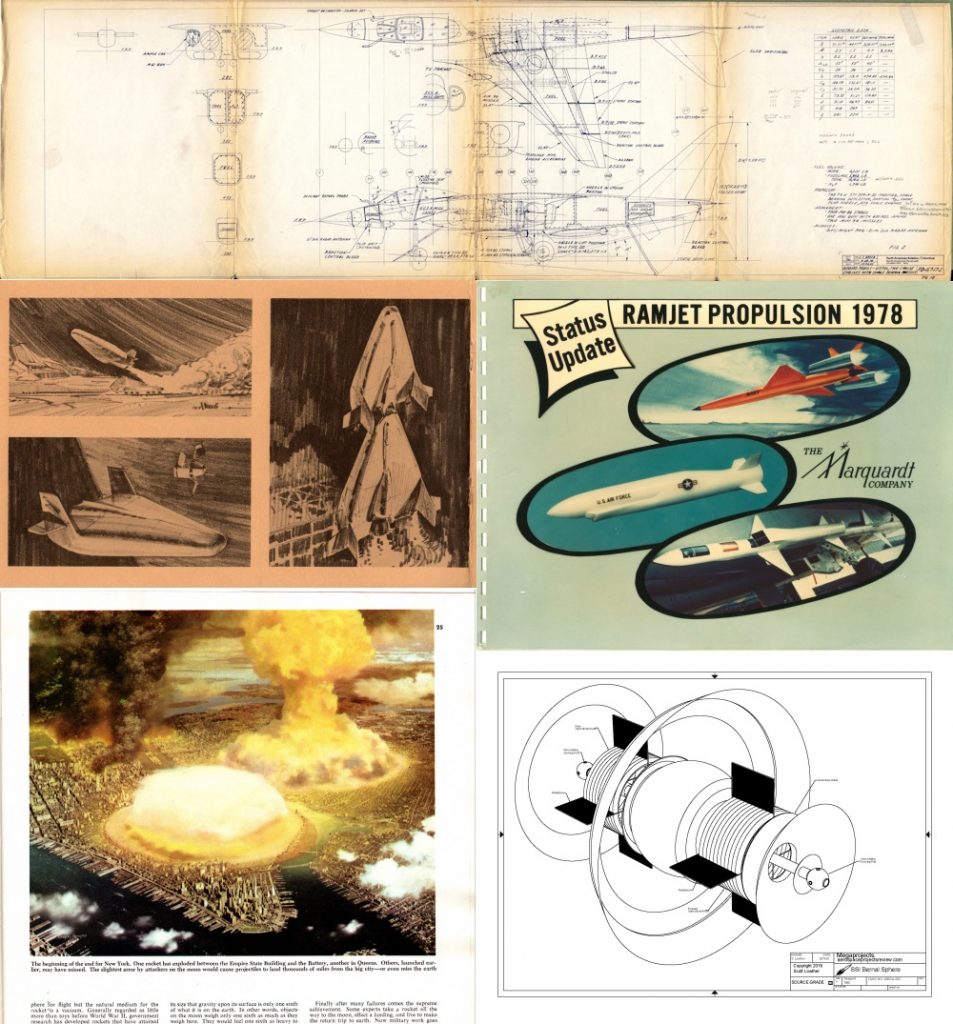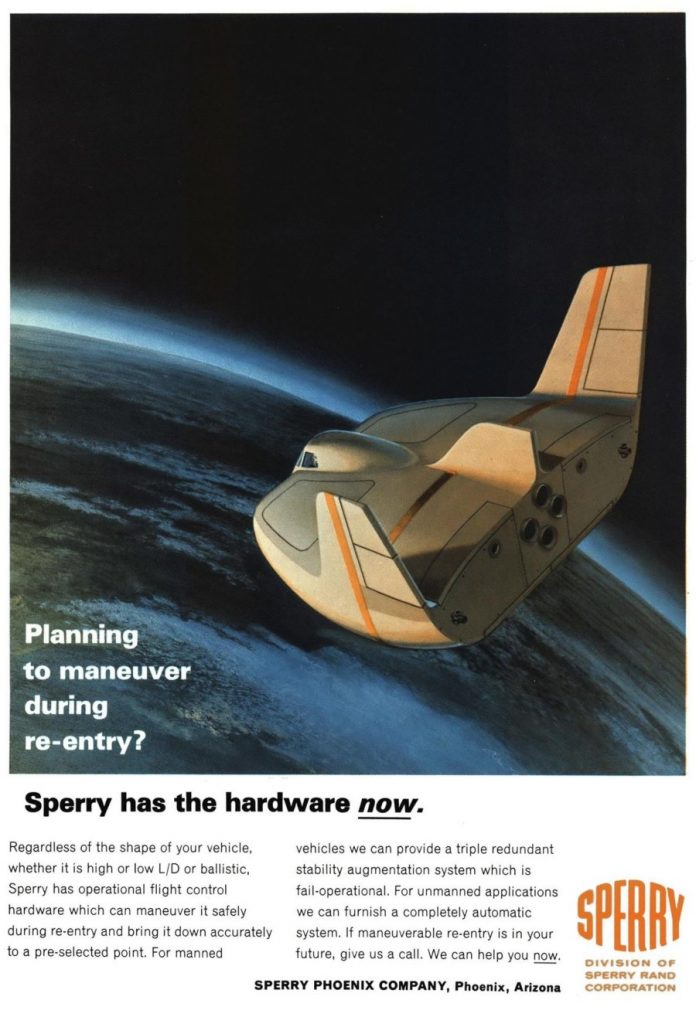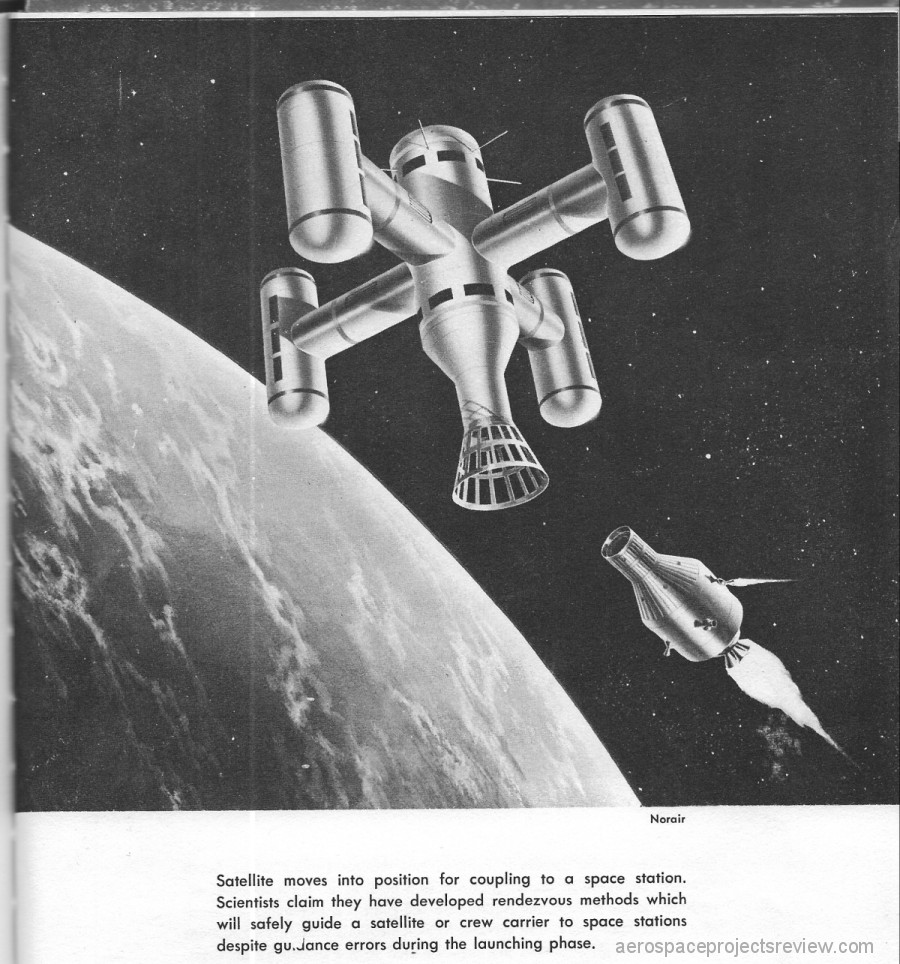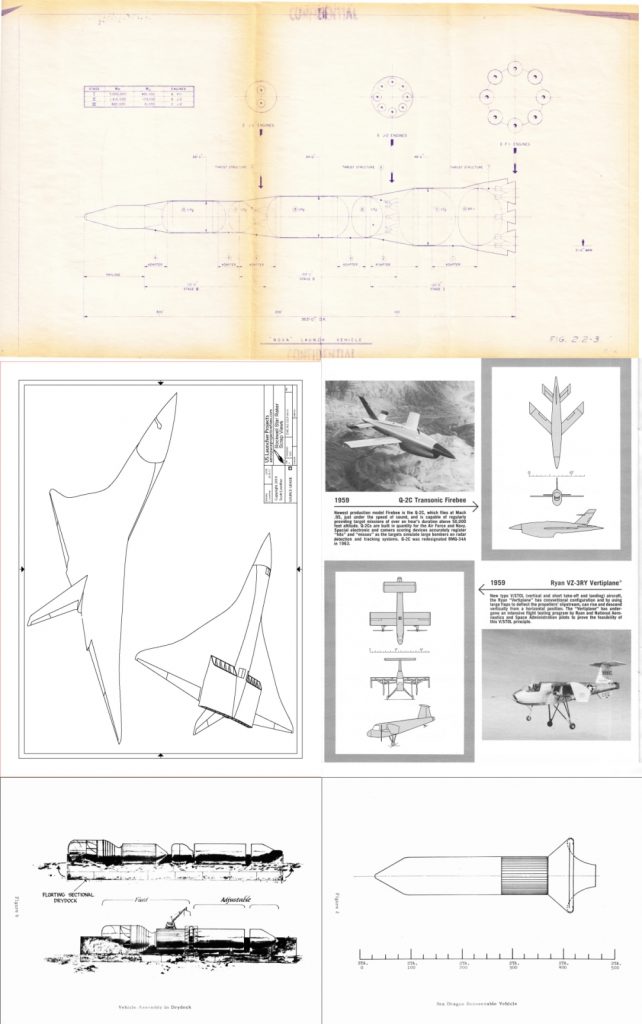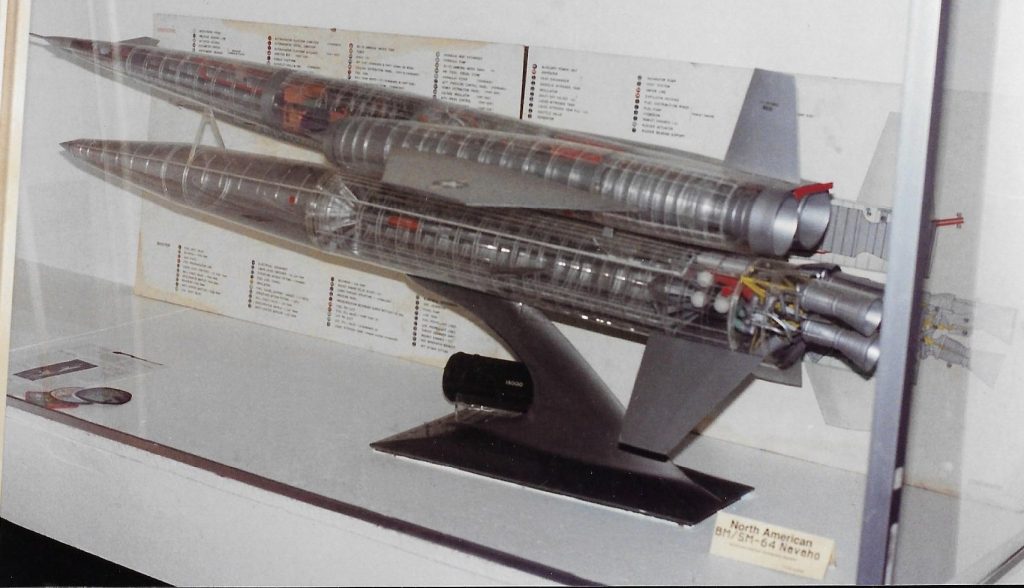This subject has been mentioned on this blog before (way back in 2008, 2012, and 2013), but here’s a brand-new video covering the subject of the inconel foil insulation that protected the F-1 engines on the Saturn V when they flew. This insulation was rarely seen by the public and made the engines look entirely different from what people were used to, because the insulation was something of a last-minute addition to help counter some severe heating cause by exhaust gas recirculation as well as direct thermal radiation roasting of the central engine.
A video where some guys get into the archives of the US Space & Rocket Center in Huntsville, Alabama. On display is a sizable (looks like about 1/50 scale) Space Shuttle, ET and Boosters made from plexiglas. It is a thing of beauty, surely a chore and a half for the model shop back in the day. This is *not* the final Shuttle design; some differences are obvious such as the split cargo bay doors and, while unmentioned in the video, the existence of extended OMS pod fairings, reaching out onto the aft of the cargo bay doors.
Last time I visited the USS&RC in something like 2005 they had a much bigger plexiglas STS model on public display, something like 1/10 scale, along with a gigantic plexiglas Saturn V. Such things are fantastic artifacts, and if you are working on a complex engineering project like this a see-through plexiglass large scale model is terribly helpful. I suspect that such things are only rarely made these days, as computer graphics are a lot easier, cheaper and more readily updatable. But nothing beats a Real Thing. And at least so far, 3D printing is not up to the job of stamping out large-scale transparent models like this. But someday…
The Air Force Research Lab has released a half-heartedly CGI animated video showing the X-60A hypersonic research vehicle designed by Generation Orbit. This is a small unmanned missile to be carried to release altitude underneath a modified Gulfstream III corporate jet, where it would fire its own throttleable liquid rocket engine and climb to cruise altitude (~130,000 ft). The vehicle is fitted with an unconventional set of wings and control surfaces; it’s not immediately clear just what it’s supposed to do other than go fast. One would imagine that high-Mach airbreathing propulsion systems would be of interest to the USAF these days, and scramjet technology is mentioned as part of the proposed payload, but how such equipment would be integrated into the vehicle is unclear.

The San Diego Air and Space Museums Flickr account recently added this illustration, showing a Convair “Big Stick” being launched off the back of mobile transporter. “Big Stick” was a Convair concept for a nuclear ramjet powered cruise missile of nearly unlimited range, a less-known competing design against Voughts Pluto vehicle.
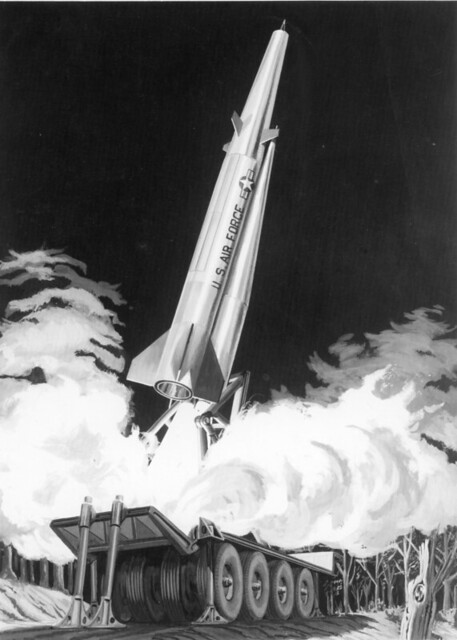
A higher rez (though, sadly, not a whole lot higher) version is available HERE.
If you are interested in Big Stick and Project Pluto, I recommend Aerospace Projects Review issue V2N1, which covers both in detail.
The Vought Hypervelocity Missile program began in the 1980’s as an effort to create a relatively low-cost anti-armor missile. Instead of a massive warhead, the HVM would use kinetic energy to simply punch a hole through the armor of Soviet tanks. it would do this by accelerating to in excess of Mach 4. The HVM program continued on in several modified forms into the 21st century, but eventually did not result in production.
A recent pile of stuff purchased on eBay included two Vought prints of the HVM, one showing either a test round or a mockup, the other an artists concept showing an armored vehicle with a large turret for the storage and launch of HVMs, in the process of ruining the day of the crews of two Soviet T-72s. Sadly the prints have seen better days, having gotten a bit crumpled over the years, but they’re better than nothing. I have scanned them in full color/300 DPI and uploaded the scans to the 2019-02 APR Extras folder on Dropbox, available to all APR Patrons and Monthly Historical Documents subscribers at the $4 level or higher.
On the 29th, APR Patrons and Monthly Historical Documents program subscribers were sent emails containing links to the January, 2019 rewards. This months set of documents and diagrams included high-rez copies of:
Document: “ASTRO A Manned Reusable Spacecraft Concept,” a Douglas Missiles & Space brochure from August, 1962, describing a two-stage Shuttle-like vehicle
Document: “Status update Ramjet Propulsion 1978” a brochure from the Marquardt Company
Document: “Rocket Blitz Form the Moon” an article from the October 23, 1948 issue of “Colliers” magazine describing the use of the Moon as a missile base, with some helpful Bonestell illustrations of Manhattan getting nuked.
Diagram: A large format color scan of the 1970 North American Rockwell PD-157-17-2 HIPAAS V/STOL jet fighter
CAD Diagram: isometric view, Bernal Sphere space habitat
If this sort of thing is of interest and you’d like to get in on it and make sure you don’t miss any of the forthcoming releases, sign up either for the APR Patreon or the APR Monthly Historical Documents Program.
A magazine ad from 1966 depicting a lifting body in space. The design seems reasonable (sort of a cross between the M2 and the HL-10) but could very well be a product not of engineers but of the art department. The angle is not the most informative, but it appears that this design has something of a squared-off nose. Note that the cockpit canopy is exposed, something that very few small lifting body re-entry vehicle designs had… for the simple reason that the windows would likely melt during re-entry, and that would defeat the purpose in making the thing recoverable (along with likely damaging pilot morale). As vehicles get bigger, such as the space shuttle, the windows get further away from the nose and can be made survivable. But little designs like this? Not very likely with 1960’s tech. Otherwise, though, it is an attractive illustration.
A piece of concept art circa 1960 depicting a Northrop concept for a space station. Not much to say about it as there are no good scale references, nor do I think I have anything else depicting the station. It is, however, not dissimilar from a lot of other space station concepts of the time… replace the four “habitat” cylinders with a single torus, and this would be pretty much every space station from the Colliers series until the Manned Orbital Space Station concept from the early 60’s.
2018-12 Rewards are now available for downloading for APR Historical Documents subscribers. This month the rewards include:
1: A large document: “Sea Launch and Recovery of Very Large Rocket Vehicles,” a 1962 Aerojet report on the sea Dragon concept
2: “Ryan Aeronautical Company Plane Portraits,” information, photos and three-views of a sizable range of Ryan aircraft, manned and unmanned
3: “Nova,” a blueprint of the NASA “Saturn C-8” launch vehicle with 8 F-1 engines
4: CAD diagrams: Star Raker scrap views
If you are interested in signing up, you can do so either at Patreon or directly through PayPal. Signing up now makes you eligible for rewards starting with the *next* months rewards. The directly-through-PayPal system is new; it would probably be best to sign up after the first of the month.
I was sent this photo of a large scale model of the North American SM-64 “Navajo” two-stage cruise missile. the model, largely made from clear plexiglas, was some years ago on display in a Quonset hut at the Planes of Fame Museum in Chino, California. Sometime after this photo was taken the museum was shut down, reworked and re-opened, and after that the museum was no longer in evidence. The photographer wishes to know what became of this model. Anyone know?
